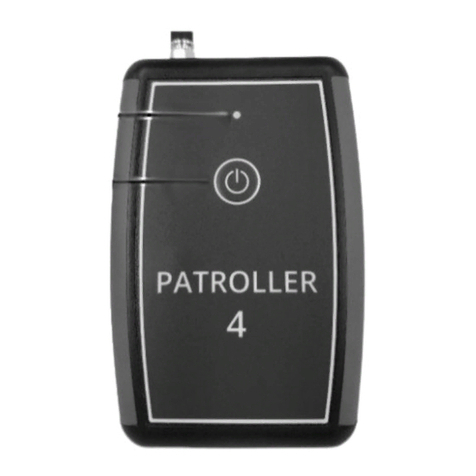
2
WEEE and the Battery Directive
Waste Electrical and Electronic Equipment.
HWM-Water Ltd is a registered producer of Electrical and Electronic Equipment in the United
Kingdom (registration number WEE/AE0049TZ). Our products fall under category 9
(Monitoring and Control Instruments) of The Waste Electrical and Electronic Equipment
(WEEE) Regulations. We take all environmental issues seriously and fully comply with the
requirements for collection, recycling and reporting of waste products.
HWM-Water Ltd is responsible for WEEE from customers in the United Kingdom provided
that:
The equipment was produced by HWM-Water Ltd (Palmer Environmental / Radcom
Technologies / Radiotech / ASL Holdings Ltd) and supplied on or after 13th August 2005
The equipment was supplied before 13th August 2005 that has been directly replaced HWM-
Water Ltd products manufactured since 13th August 2005.
HWM-Water products supplied after 13th August 2005 can be identified by the following
symbol:
Under HWM-Water Ltd’s Terms and Conditions of Sale, customers are responsible for the
cost of returning WEEE to HWM-Water Ltd and we are responsible for the costs of recycling
and reporting on that waste.
Instructions for returning WEEE:
Ensure that the WEEE meets one of the two conditions above.
The waste will need to be returned in accordance with the regulations for transporting data
loggers with lithium batteries.
a. Pack loggers in strong, rigid outer packaging to protect them from damage.
b. Attach a Lithium Warning Label to the package.
c. The package must be accompanied by a document (e.g. consignment note) that
indicates:
i. The package contains lithium metal cells;
ii. The package must be handled with care and that a flammability hazard
exists if the package is damaged;
iii. Special procedures should be followed in the event the package is
damaged, to include inspection and repacking if necessary; and
iiii. A telephone number for additional information.
d. Refer to the ADR regulations on shipping dangerous goods by road.
Return the WEEE to HWM-Water Ltd using a licensed waste carrier.
In accordance with the regulations, customers outside the United Kingdom are responsible for
WEEE.
The Battery Directive
As a distributor of batteries HWM-Water Ltd will accept old batteries back from customers for
disposal, free of charge, in accordance with the Battery Directive.
PLEASE NOTE: All lithium batteries MUST be packaged and returned in accordance with the
relevant regulations for transporting lithium batteries.
A licensed waste carrier must be used for transporting all waste.
For more information on WEEE compliance or the Battery Directive please e-mail
CService@hwm-water.com or phone +44 (0)1633 489 479




























